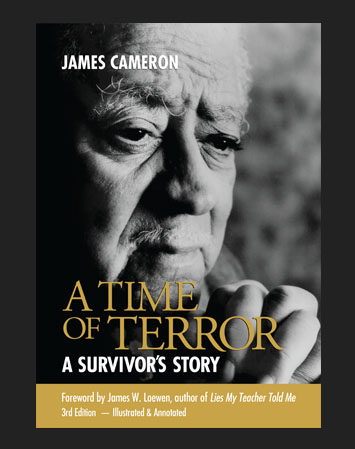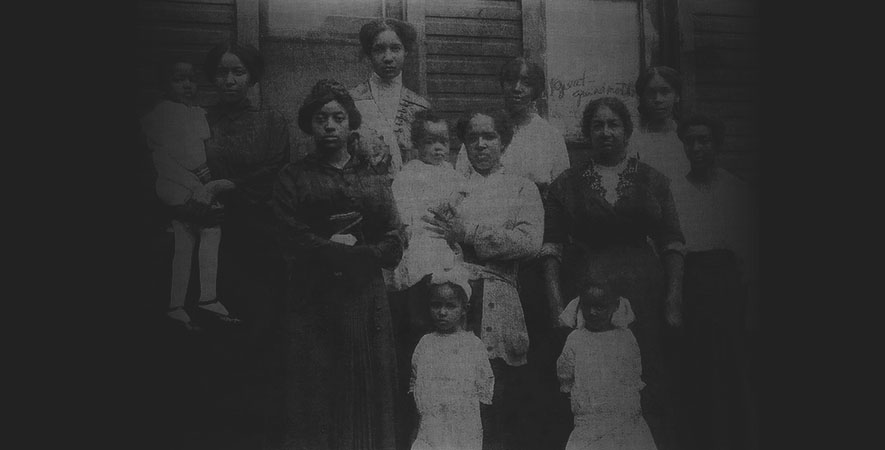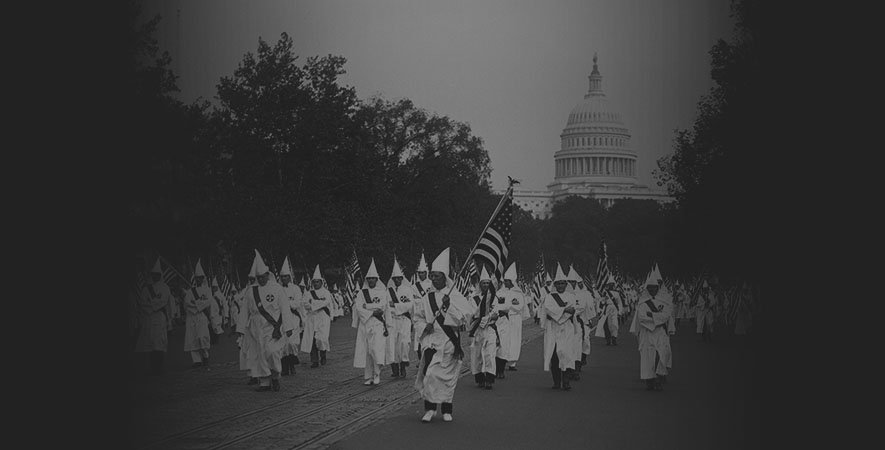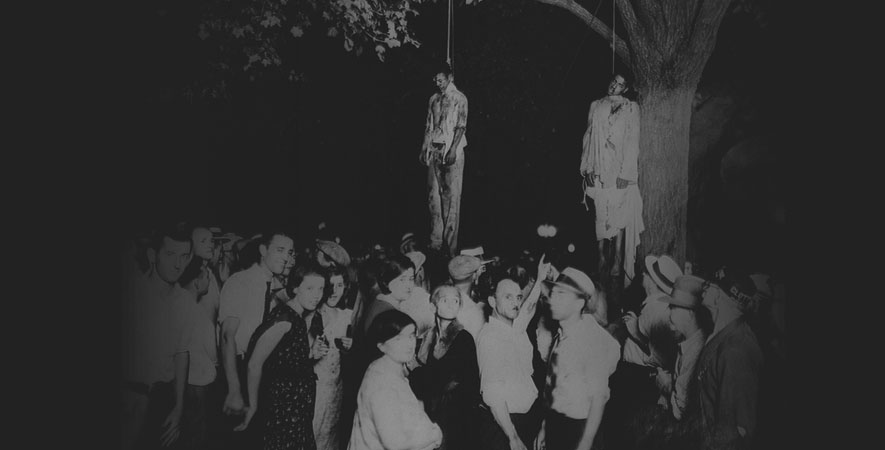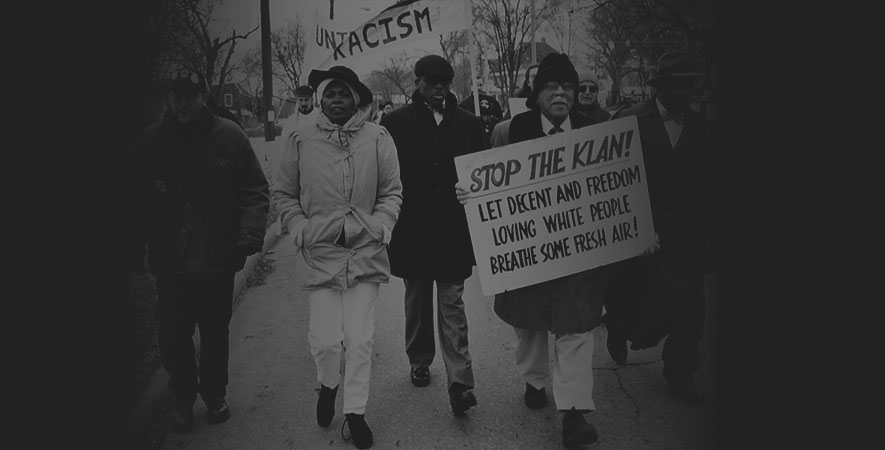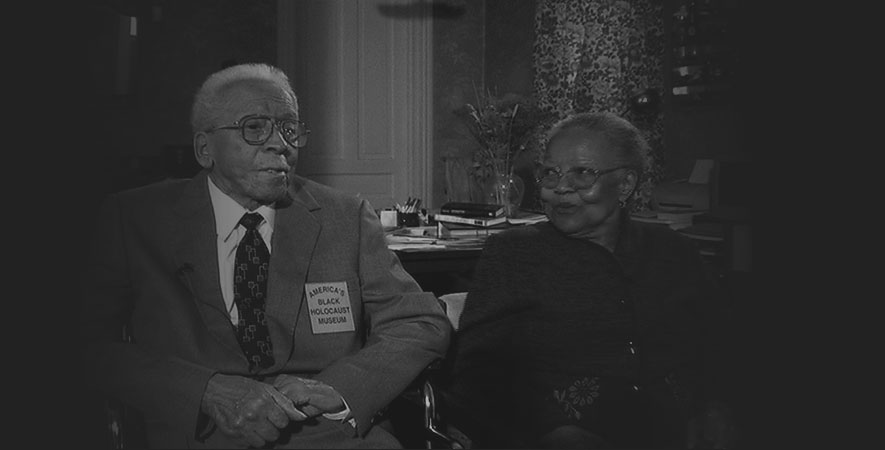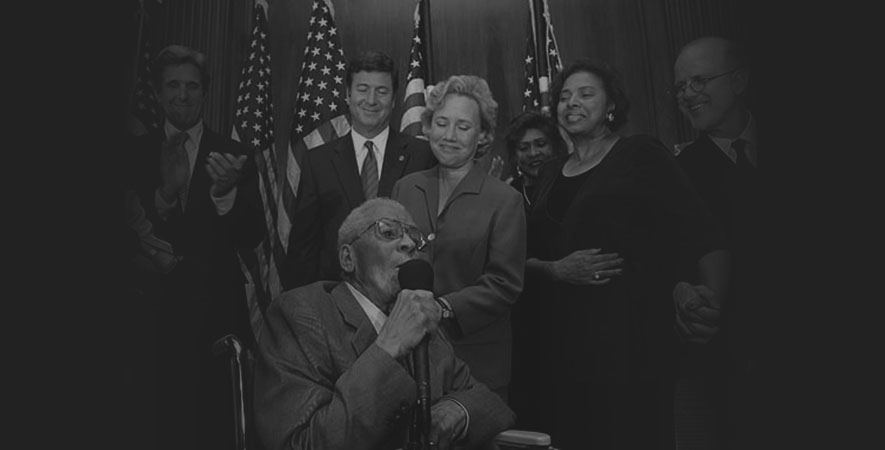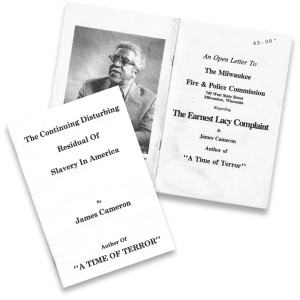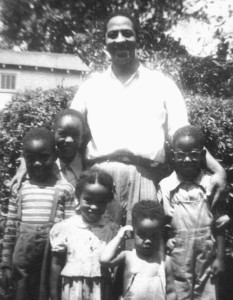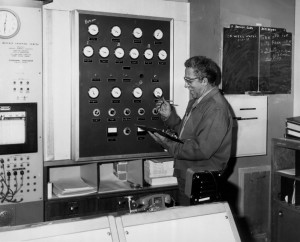Dr. James Cameron
James Cameron (1914-2006) was an early civil rights pioneer, self-taught public historian, and author of dozens of essays on issues in American and African American history and contemporary life. Cameron’s most well known written work is his memoir, A Time of Terror: A Survivor’s Story, now in its 3rd edition. In 1988 he founded America’s Black Holocaust Museum in Milwaukee, Wisconsin. The University of Wisconsin-Milwaukee awarded Cameron an honorary Doctor of Humanities degree in 1999 for a lifetime of work exhibiting materials of uncommon merit, moral and intellectual value to the city and state.
As a 16-year-old in 1930, Cameron was lynched with two older teens on the courthouse lawn in in Marion, Indiana. An estimated ten to fifteen thousand men, women, and children gathered from around the state to witness the spectacle. A professional photographer snapped the world’s most recognized lynching picture, which shows a group of spectators, one of whom is pointing to the hanging bodies of Cameron’s two companions. Cameron, though badly beaten, survived the lynching. He was imprisoned for the next five years, during which he began writing A Time of Terror.
Banished from Indiana during his parole, Cameron returned to live just thirty miles from the lynching tree to raise his family, establish a business, and organize for the NAACP (National Association for the Advancement of Colored People). James, with his wife Virginia and his children, personally challenged segregation in their town’s movie theater by sitting in the Whites Only section–and won. In 1942, Indiana’s governor would appoint him Director of Civil Liberties, requiring him to travel the state investigating violations of the Public Accommodations Act.
In 1952, as threats against his family mounted and organizing Indiana’s black community to resist became increasingly untenable, the Cameron family moved to Milwaukee, Wisconsin. Like many newly arrived black migrants, Cameron found well-paying factory jobs in that industrial city. He was able to send all five of his children to college, make research trips to the Library of Congress and National Archives, write, and build the collection of black history artifacts that would later become the museum.
On a post-retirement trip in 1979, James and Virginia visited the Yad Vashem memorial museum in Jerusalem. Moved by the way that museum keeps the story of Jewish Holocaust victims alive before the world’s conscience, Cameron recognized a need to do the same for the descendants of enslaved Africans in America. He founded America’s Black Holocaust Museum to support African Americans in finding their identity and strength in “remembering their passages” and to help all of America’s peoples to forge “one single and sacred nationality.”
Dr. Cameron and his lynching story have been featured in documentary films, in televised interviews with the likes of Larry King and Oprah, and in books by historians, journalists, and even psychologists. Despite the terrible trauma he endured in his formative years, he was a forgiving, peaceful, loving man with a playful and sometimes mischievous spirit.
In this video, former ABHM director, Corey Joe Biddle, shares a story about Dr. Cameron’s sense of humor.
The new 3rd edition of Dr. Cameron’s memoir includes a comprehensive Afterword: The Amazing Afterlife of Dr. James Cameron by his protégé, public historian and schoolteacher Reggie Jackson.
For more on Dr. Cameron’s life, visit this exhibit in America’s Black Holocaust Museum.

